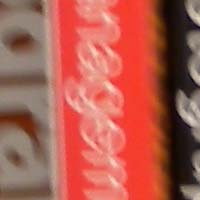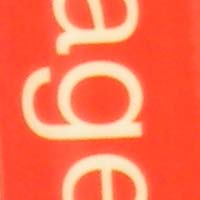Nikon Coolpix P6000 Review
Review Date: October 29th 2008
Author: Mark Goldstein
Leave a comment about this review
|
Image Quality
All of the sample images in this Review were taken using the 13.5M Fine mode, which gives an average image size of around 5-6Mb.
The Nikon Coolpix P6000's image quality is very good. The Nikon Coolpix P6000's main drawback in terms of image quality is noise, with ISO 400 showing obvious noise. The noise, colour desaturation and loss of detail gets progressively worse as you go from ISO 400 to ISO 800 and finally the completely unusable 1600 and 2000 settings. The Nikon Coolpix P6000 handled chromatic aberrations excellently with limited purple fringing effects appearing only in high contrast situations. The 13.5 megapixel images were a little soft straight out of the camera at the default sharpen setting and either require some further sharpening in an application like Adobe Photoshop, or you should increase the in-camera sharpening level. The Nikon Coolpix P6000's maximum shutter speed is 30 seconds, which is excellent news for night photography enthusiasts, and the quality of the after-dark images is very good. Macro performance is one of the stand-out highlights, allowing you to focus as close as 2cms away from the subject, although there is a lot of lens distortion and shadowing at such a close distance. Vibration reduction is a very useful feature that sets this camera apart from its competitors and one that works very well when hand-holding the camera in low-light conditions or when using the telephoto end of the zoom range. The built-in flash worked well indoors, with just a little red-eye and good overall exposure. Overall the Nikon Coolpix P6000 produces very good pictures, with noise at ISO 400 and above the only notable complaint.
Noise
There are 9 ISO settings available on the Nikon Coolpix P6000 which you can select at any time if the camera is in any of the PASM shooting modes. There is no discernible noise at the slowest settings of ISO 64, 100 and 200, but noise and a slight desaturation of colour is already evident at ISO 400. There is very noticeable noise at ISO 800, and by ISO 1600 a lot of the detail has been lost. The fastest, full-sized setting of ISO 2000 is in my opinion completely unusable, looking good on the spec sheet, but terrible in reality, and ISO 3200 and 6400 both automatically reduce the image resolution to 2048x1536 pixels. Here are some 100% crops which show the noise levels for each ISO setting:
ISO 64 (100% Crop) |
ISO 100 (100% Crop) |
 |
 |
ISO 200 (100% Crop) |
ISO 400 (100% Crop) |
 |
 |
ISO 800 (100% Crop) |
ISO 1600 (100% Crop) |
 |
 |
ISO 2000 (100% Crop) |
ISO 3200 (100% Crop) |
 |
 |
ISO 6400 (100% Crop) |
|
 |
Sharpening
Here are two 100% crops which have been Saved as Web - Quality 50 in Photoshop. The right-hand image has had some sharpening applied in Photoshop. The out-of-the camera images are a little soft at the default sharpening setting. You can change the in-camera sharpening level to one of six levels via the Picture Controls menu option if you don't like the default look.
Original
(100% Crop) |
Sharpened (100% Crop) |
 |
 |
 |
 |
File Quality
The Nikon Coolpix P6000 has 3 different image quality settings available, with Fine being the highest quality option. Here are some 100% crops which show the quality of the various options, with the file size shown in brackets.
13.5M
Fine (5.31Mb) (100% Crop) |
13.5M
Normal (2.97Mb) (100% Crop) |
 |
 |
13.5M
Basic (1.50Mb) (100% Crop) |
|
 |
|
Chromatic Aberrations
The Nikon Coolpix P6000 handled chromatic aberrations very well during the review. Limited purple fringing was mainly present around the edges of objects in high-contrast situations, as shown in the example below.
Example
1 (100% Crop) |
 |
Macro
The Nikon Coolpix P6000 offers a Macro setting that allows you to focus on a subject that is 2cms away from the camera when the lens is set to wide-angle. The first image shows how close you can get to the subject (in this case a compact flash card). The second image is a 100% crop.
Macro Shot |
Macro Shot (100% Crop) |
 |
 |
Flash
The flash settings on the Nikon Coolpix P6000 are Auto, Auto with Red-eye Reduction, Fill Flash, Slow Sync, Rear-curtain Sync and Flash Off. These shots of a white coloured wall were taken at a distance of 1.5m.
Flash Off - Wide Angle (28mm) |
Auto Flash - Wide Angle (28mm) |
 |
 |
Flash Off - Telephoto (112mm) |
Auto Flash - Telephoto (112mm) |
 |
 |
And here are some shots of yours truly. As you can see, both the Flash On setting and the Red-eye Flash option caused a small amount of red-eye.
Fill Flash |
Fill Flash (100% Crop) |
 |
 |
Auto with Red-eye Reduction |
Auto with Red-eye Reduction (100% Crop) |
 |
 |
Night Shot
The Nikon Coolpix P6000's maximum shutter speed is 30 seconds in the Manual shooting mode, which is excellent news if you're seriously interested in night photography. Note that noise reduction is automatically applied to all shutter speeds slower than 15 seconds. The shot below was taken using a shutter speed of 15 seconds, aperture of f/4 at ISO 64. I've included a 100% crop of the image to show what the quality is like.
Night Shot |
Night Shot (100% Crop) |
 |
 |
Vibration Reduction
The Nikon Coolpix P6000 has an vibration reduction mechanism, which allows you to take sharp photos at slower shutter speeds than other digital cameras. To test this, I took 2 handheld shots of the same subject with the lens set to the same focal length and ISO speed. The first shot was taken with vibration reduction turned off, the second with it turned on. As you can see, with vibration reduction turned on, the images are definitely sharper than with vibration reduction turned off. This feature really does seem to make a difference and could mean capturing a successful, sharp shot or missing the opportunity altogether. Here is a 100% crop of the images to show the results.
| Shutter Speed / Focal Length | Anti Shake Off (100% Crop) |
Anti Shake On (100% Crop) |
| 1/7th sec / 28mm |  |
 |
| 0.6 sec / 112mm |  |
 |
|
![]() PhotographyBLOG
is a member of the DIWA
organisation. Our test results for the Nikon Coolpix P6000 have been submitted to DIWA
for comparison with test results for different samples of
the same camera model supplied by other DIWA
member sites.
PhotographyBLOG
is a member of the DIWA
organisation. Our test results for the Nikon Coolpix P6000 have been submitted to DIWA
for comparison with test results for different samples of
the same camera model supplied by other DIWA
member sites.
